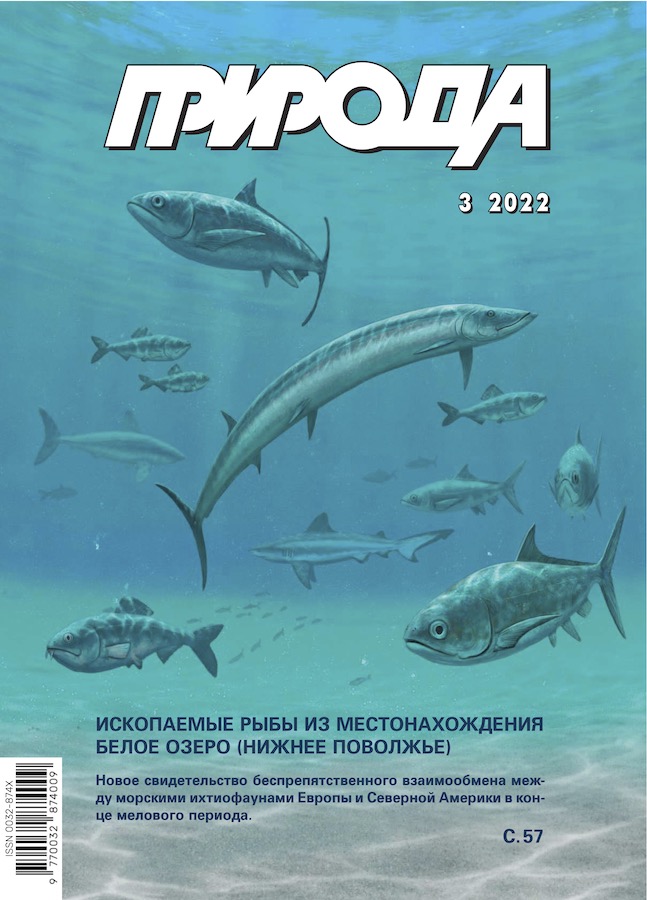Accidental Diesel Fuel Spill in Norilsk
- Autores: Glyaznetsova Y.S1, Nemirovskaya I.A2
-
Afiliações:
- Institute of Oil and Gas Problems, Siberian Branch of RAS
- Shirshov Institute of Oceanology, RAS
- Edição: Nº 3 (2022)
- Páginas: 27-38
- Seção: Articles
- URL: https://journals.eco-vector.com/0032-874X/article/view/627727
- DOI: https://doi.org/10.7868/S0032874X22030036
- ID: 627727
Citar
Texto integral
Resumo
An accidental diesel fuel spill happened at the end of May 2020 at the Thermal Power Plant No. 3 of OJSC MMC Norilsk Nickel. The study of bottomsediments of the Norilsk-Pyasina water system (July 29 — August 13, 2020) has shown that pollution spread along the river flow by 31 km, however entered neither Lake Pyasino nor the Kara Sea. The average content of aliphatic hydrocarbons in sediments of the Bezymyannyi Creek and the Daldykan and Ambarnaya rivers (1457 μg/g) was almost 70 higher than in Lake Pyasino and in the Pyasina River (in average, 21 μg/g). The composition of aliphatic hydrocarbons in bottom sediments did not correspond to the hydrocarbon composition of diesel fuel even in the most polluted areas due to the transformation of alkanes. The content of polycyclic aromatic hydrocarbons also decreased sharply with the distance from the pollution source (from 3865 to 56 ng/g). Naphthalenes (indicators of the petroleum origin of hydrocarbons) accounted for 46–53%; however they dominated not only in the sediments of the Ambarnaya and Daldykan rivers, but also in the Norilka River and at the mouth of the Pyasina River, which may result from other sources of soil pollution (erosion of coastal sediments, barrels from fuel and lubricants, etc.).
Sobre autores
Yu. Glyaznetsova
Institute of Oil and Gas Problems, Siberian Branch of RAS
Email: glyaz1408@mail.ru
Yakutsk, Russia
I. Nemirovskaya
Shirshov Institute of Oceanology, RAS
Email: nemir44@mail.ru
Moscow, Russia
Bibliografia
- Сазонов А.Д., Комаров Р.С., Передера О.С. Разлив нефтепродуктов в Норильске 29 мая 2020 года: предполагаемые причины и возможные экологические последствия. Экологические исследования и экологический мониторинг. 2020; 1–5: 173–177. doi: 10.23885/2500-395X-2020-1-5-173-177.
- Таран О.П., Скрипников А.М., Ионин В.А. и др. Состав и концентрация углеводородов донных отложений в зоне разлива дизельного топлива ТЭЦ-3 АО «НТЭК» (г.Норильск, Арктическая Сибирь). Сибирский экологический журнал. 2021; 4: 423–450.
- Трошко К.А., Денисов П.В., Лаврова О.Ю. и др. Наблюдение загрязнений реки Амбарной, возникших в результате аварии на ТЭЦ-3 города Норильска 29 мая 2020 г. Современные проблемы дистанционного зондирования Земли из космоса. 2020; 17(3): 267–274.
- Немировская И.А. Нефть в океане (загрязнение и природные потоки). М., 2013.
- Патин С.А. Нефть и экология континентального шельфа М., 2017; 1.
- Morales-Caselles C., Yunker M.B. Ross P.S. Identification of Spilled Oil from the MV Marathassa (Vancouver, Canada 2015) Using Alkyl PAH Isomer Ratios. Arch. Environ. Contam. Toxicol. 2017; 73: 118–130. doi: 10.1007/s00244-017-0390-0.
- Lifshits S., Glyaznetsova Y., Erofeevskaya L. et al. Effect of oil pollution on the ecological condition of soils and bottom sediments of the arctic region (Yakutia). Environ. Pol. 2021; 288: 117680 (www.ciencedirect.com/science/journal/02697491).
- Качество морских вод по гидрохимическим показателям. Ежегодник. Под ред. А.Н.Коршенко. М., 2020.
- Глязнецова Ю.С., Немировская И.А., Флинт М.В. Последствия аварийного разлива дизельного топлива в Норильске. Докл. РАН. Науки о Земле. 2021; 501(1): 113–118.
Arquivos suplementares









